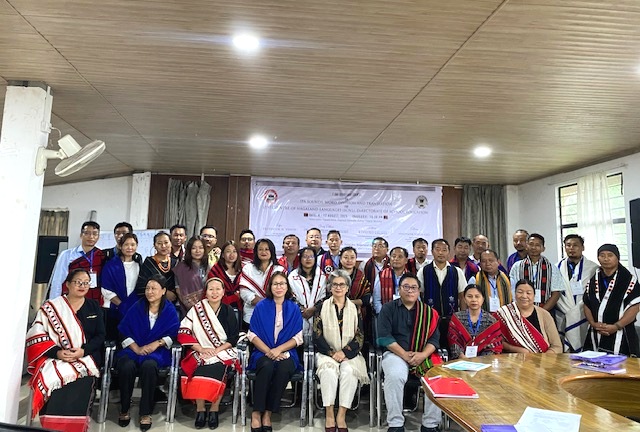Nagaland University, in collaboration with the Directorate of School Education, has launched a project to develop written grammar for 18 Naga languages.
Share

DIMAPUR — Nagaland University, in collaboration with the Directorate of School Education, has launched a landmark initiative to develop written grammar for all 18 recognised languages of Nagaland for inclusion in school textbooks.
A press release issued by the university on Monday stated that the project, aligned with the National Education Policy (NEP) 2020, aims to provide structured pedagogical grammars for classes 5 to 12.
It stated that the initiative would help fill a longstanding gap, as Naga languages have been taught in schools for decades without dedicated written grammars to support the teaching-learning process.
The project will systematically document grammar elements such as parts of speech, tense and aspect, phrase and clause structures, and tone, while also addressing orthography and enriching vocabulary.
Once completed, the material will be integrated into textbooks alongside prose, poetry, and translations under the supervision of the State Council of Educational Research and Training (SCERT) and the Nagaland Board of School Education (NBSE).
Teacher training programmes are also being planned, beginning with refresher courses hosted by Nagaland University.
The project is spearheaded by Dr. Mimi Kevichüsa Ezung, Associate Professor and Head of the Department of Tenyidie at NU.
Read more:
NU Vice Chancellor Prof. Jagadish K Patnaik said that the effort was “not merely an academic exercise but a cultural mission to preserve, strengthen, and promote the linguistic heritage of our people.”
Dr. Ezung stressed the cultural importance of the effort, noting that “developing pedagogical grammars ensures consistency and regularity in writing and speech while instilling pride in one’s mother tongue.”
The project involves multiple stakeholders, including literature boards that help standardise language varieties and coin new terms; the State Centre of Naga Languages (SCNL), which develops textbooks for Classes 1–8; and SCERT and NBSE, which integrate grammar into the curriculum.
“The 18 languages covered under this programme include Ao, Chang, Chokri, Khiamniungan, Konyak, Kuki, Kuzhale (Khezha), Liangmai, Lotha, Nthenyi (Southern Rengma), Nzonkhwe (Northern Rengma), Phom, Pochury, Sangtam, Sümi, Tenyidie (Angami), Yimkhiung, and Zeme.
“Currently, only a few languages—such as Tenyidie, Ao, Lotha, and Sümi—are taught beyond Class 8, with Tenyidie being offered up to MA and PhD level. This grammar-writing initiative will lay the foundation for expanding other languages to higher levels of education,” it stated.